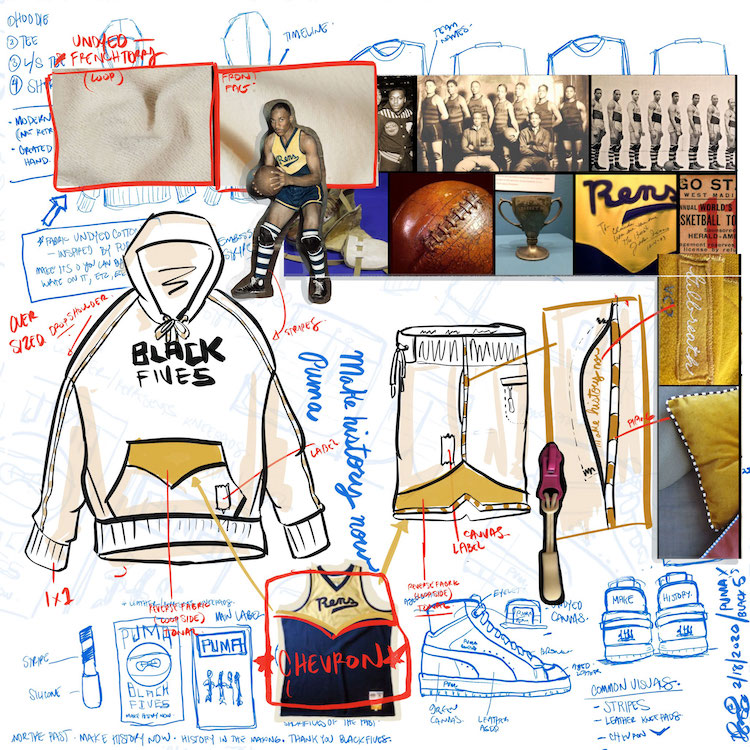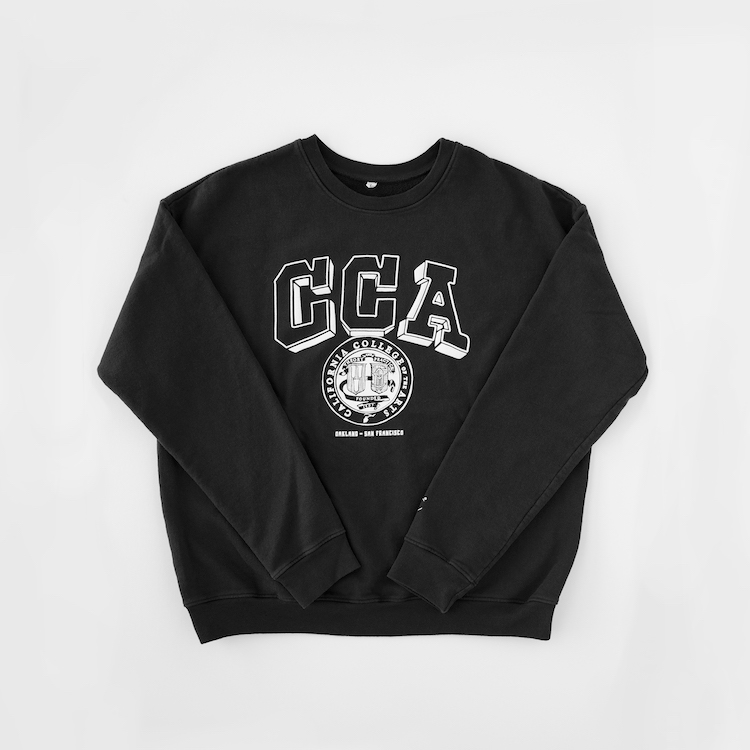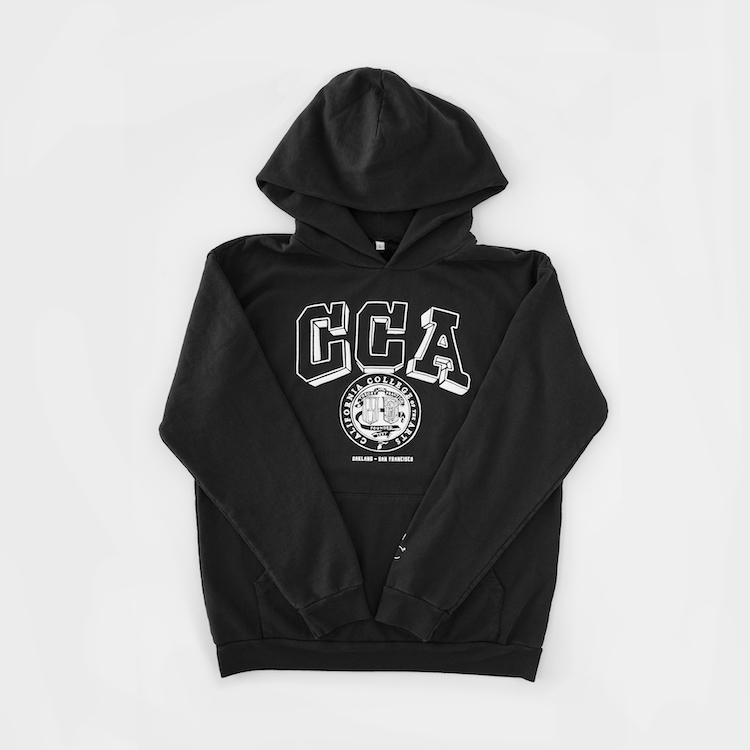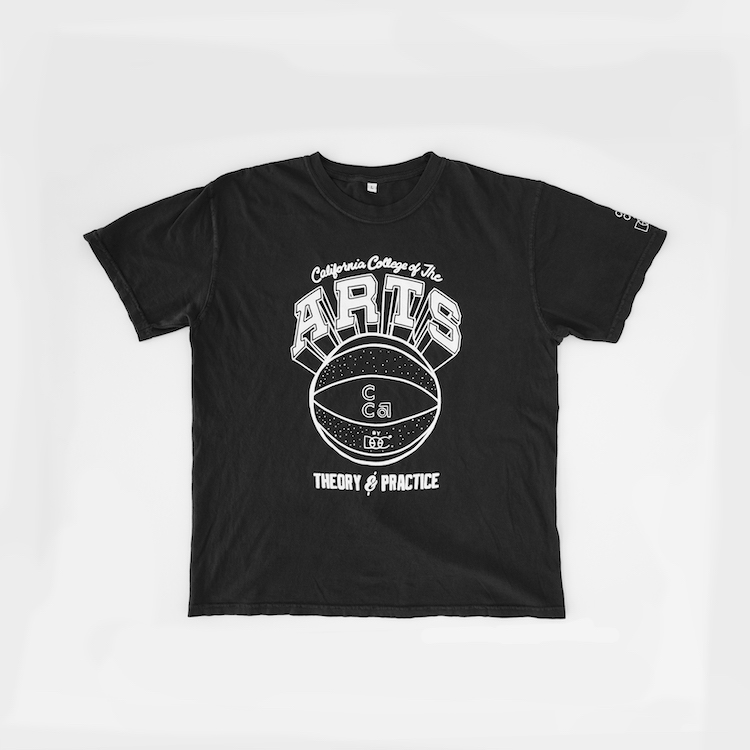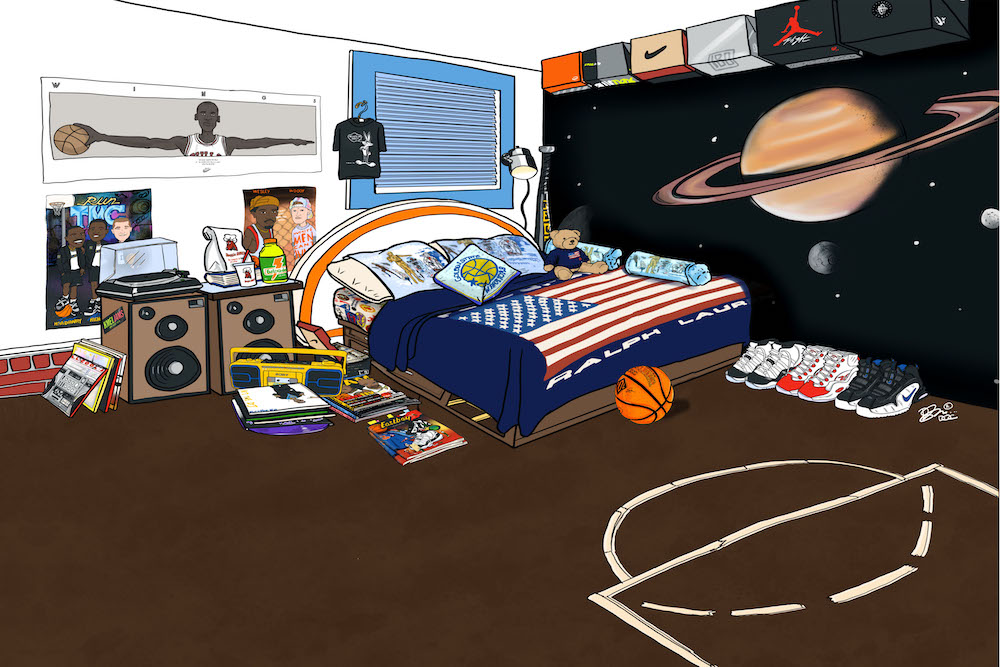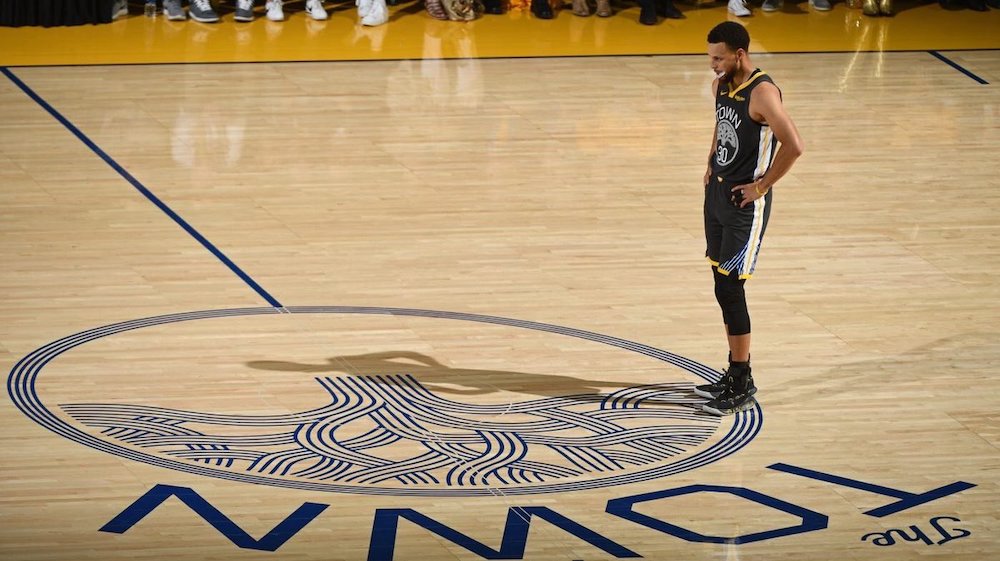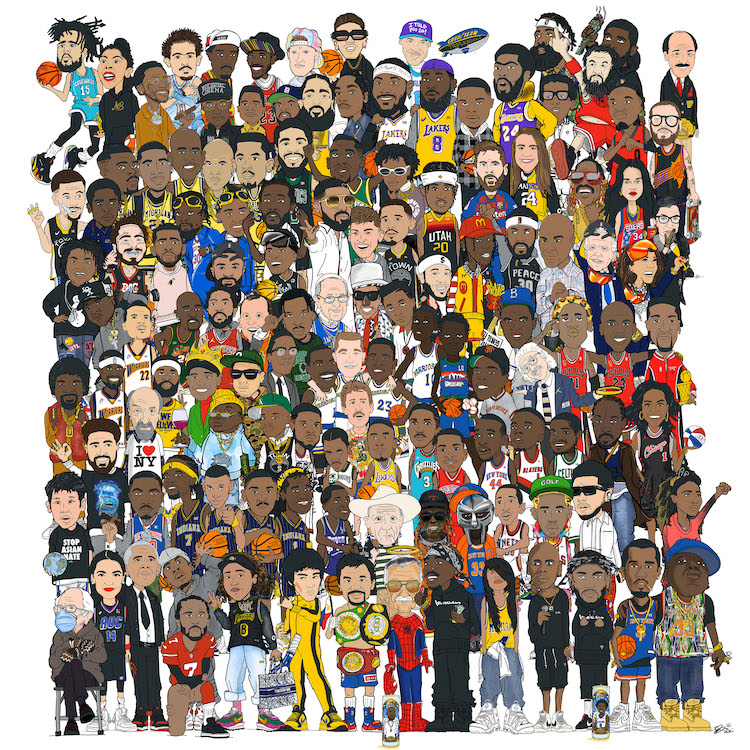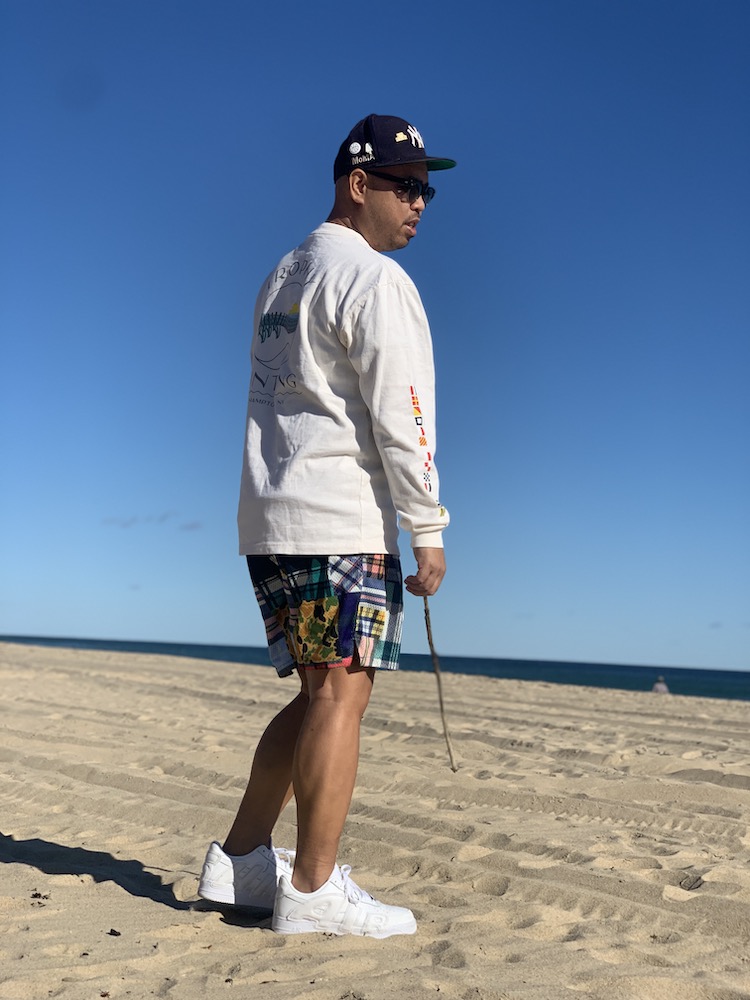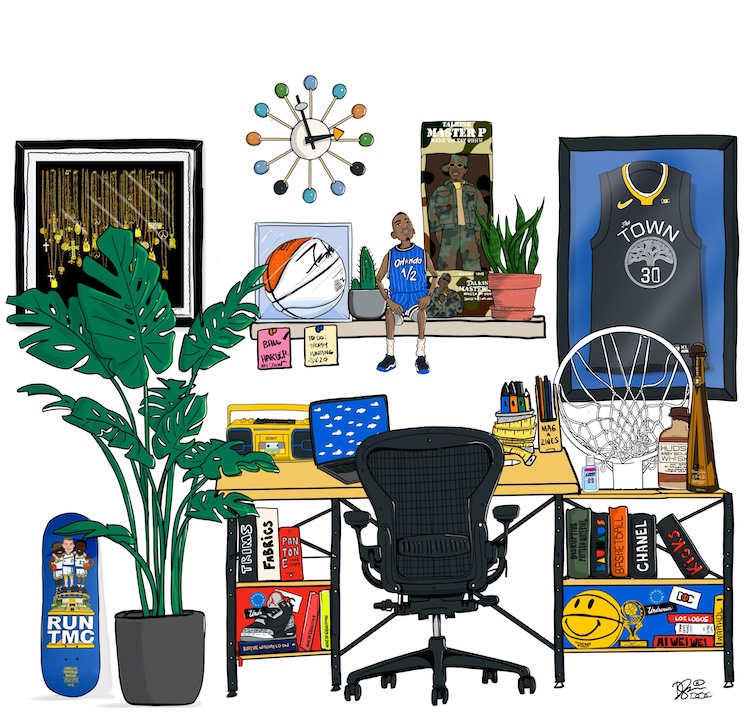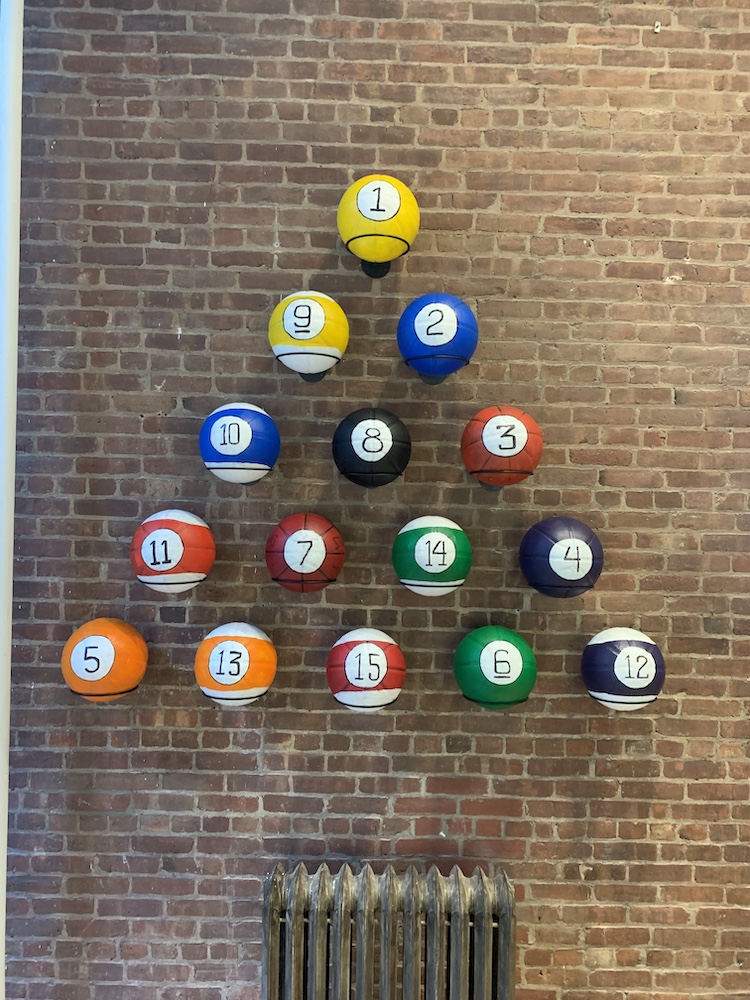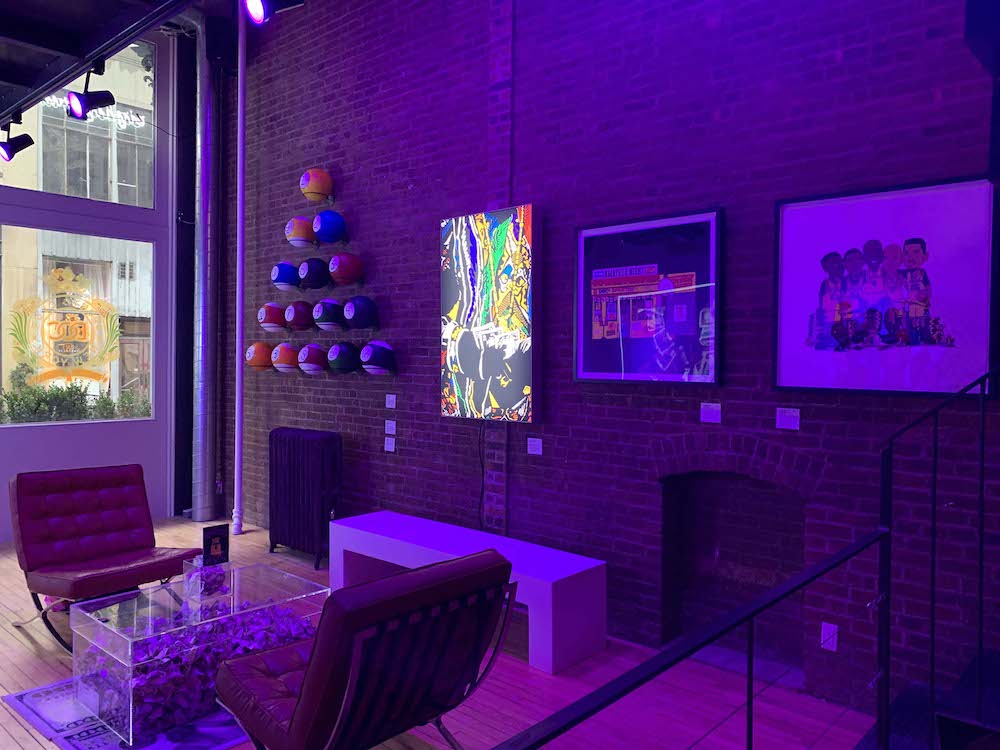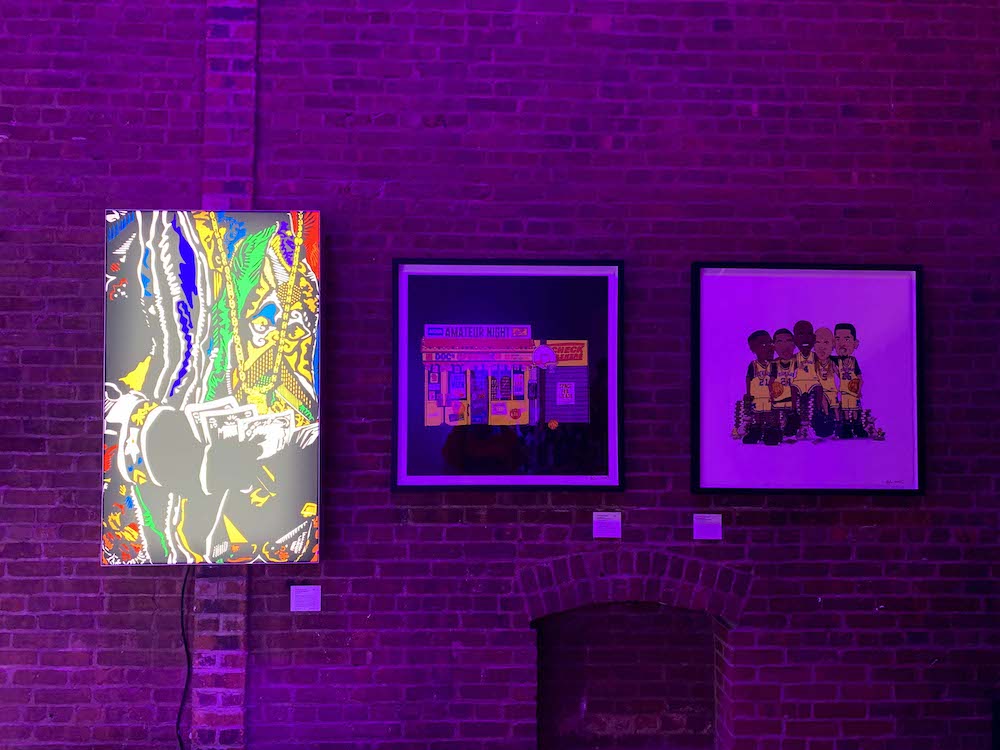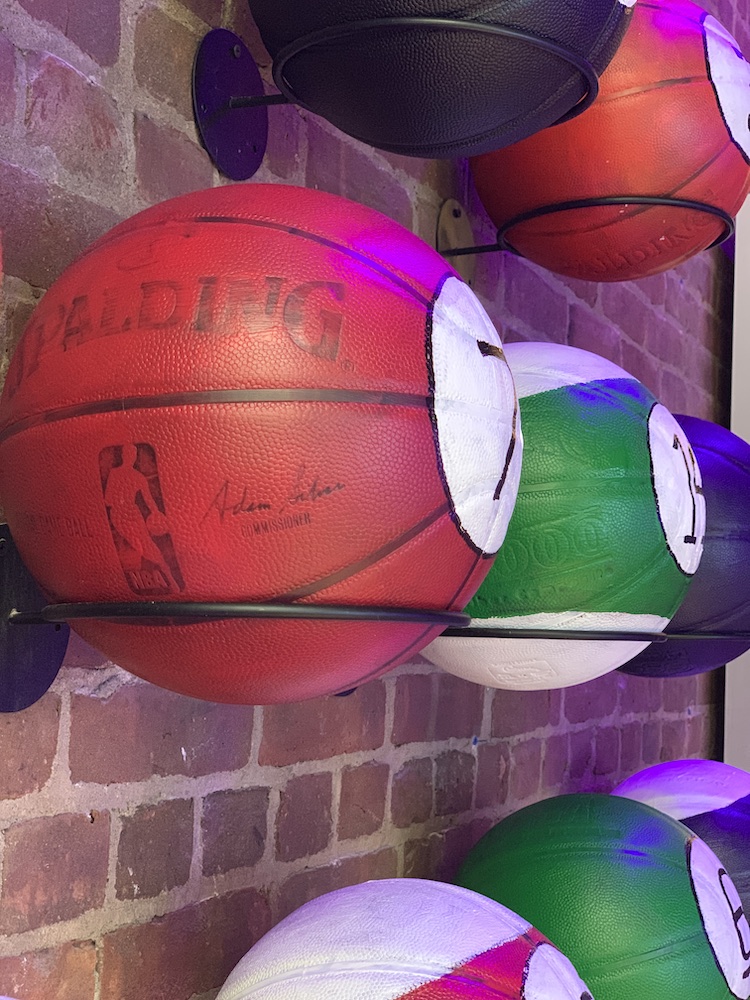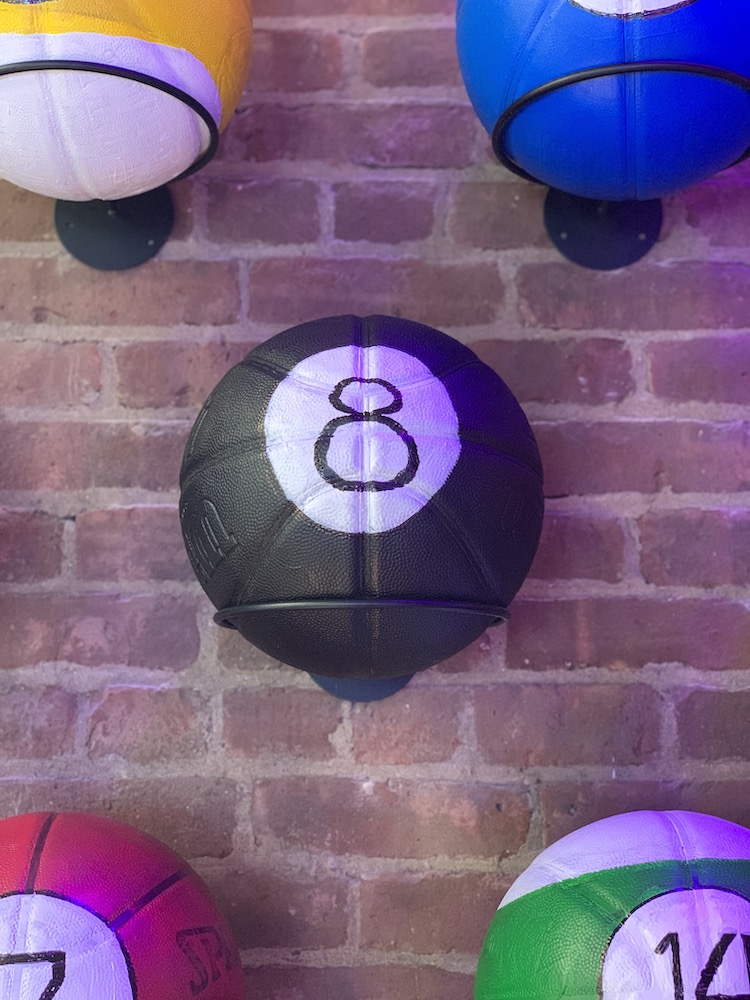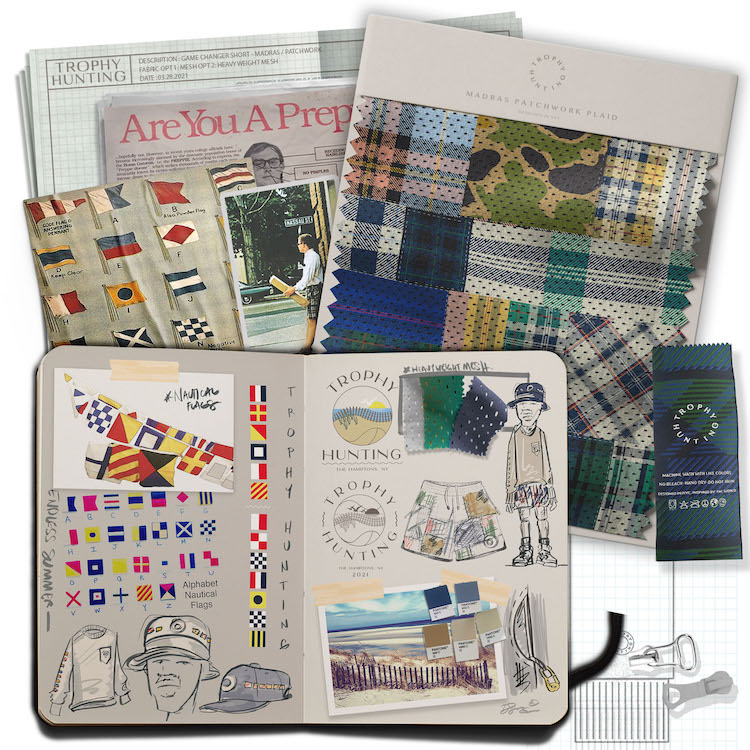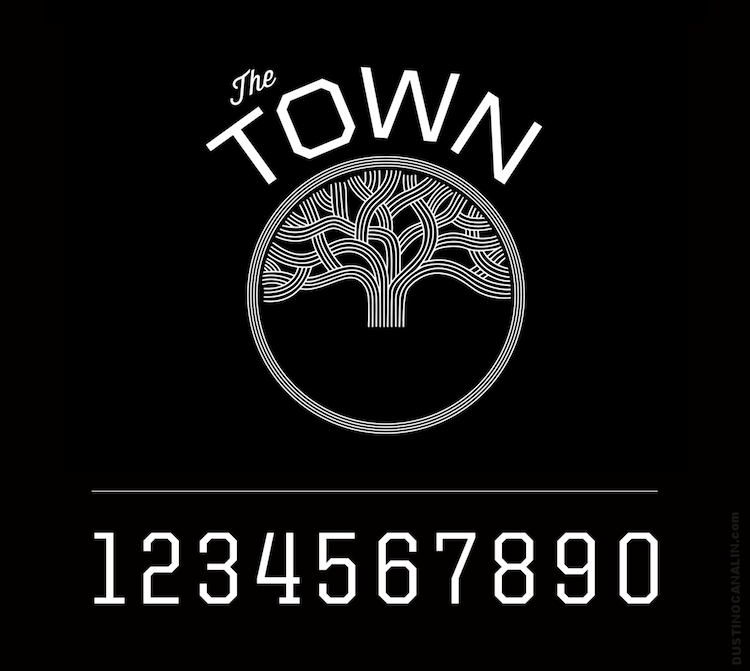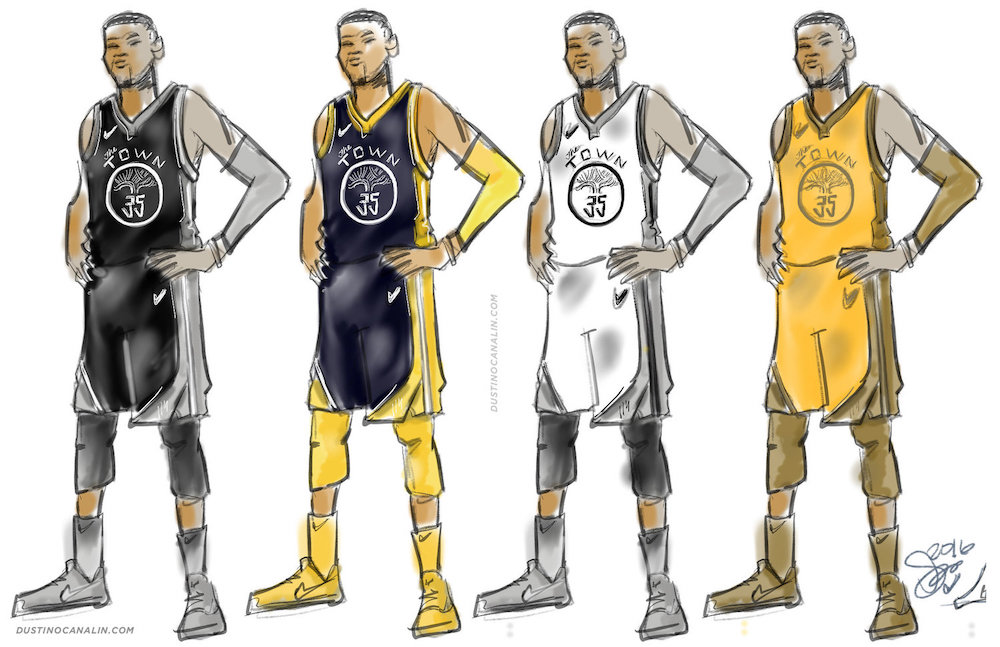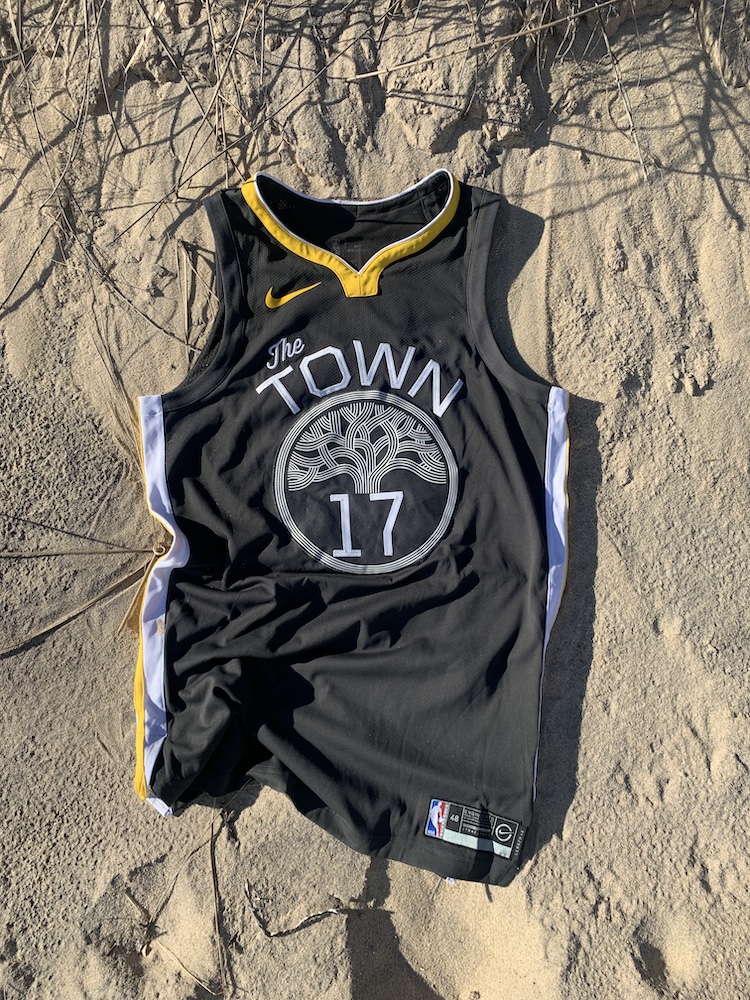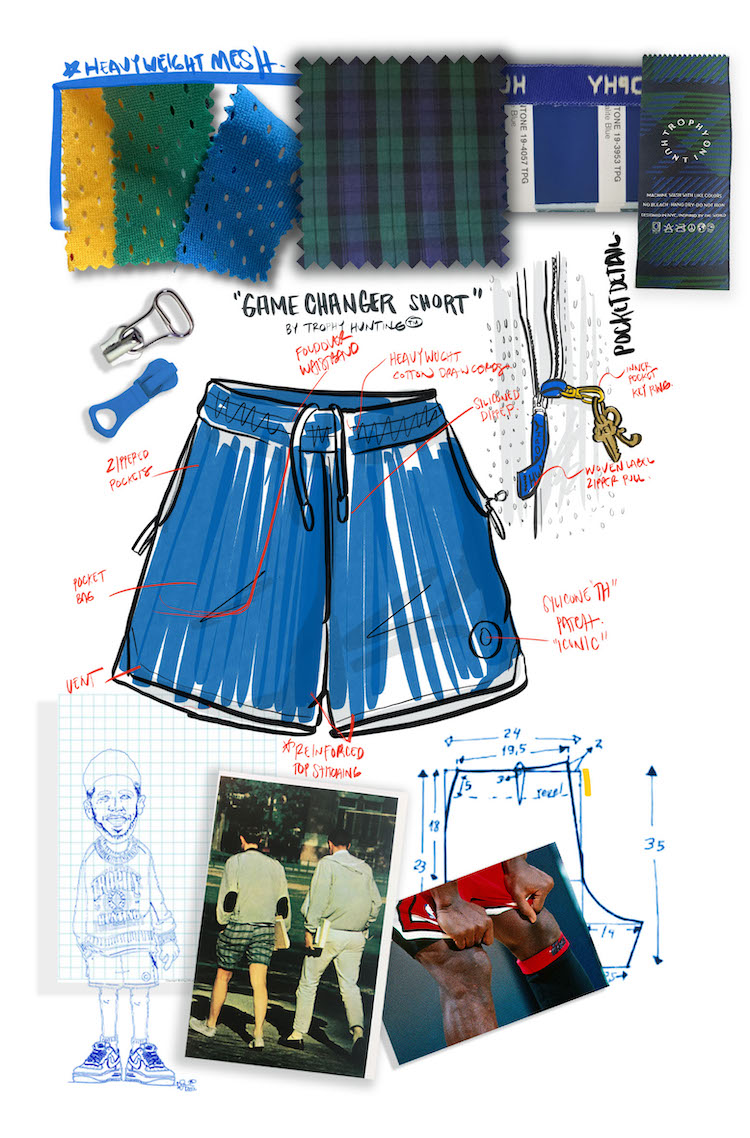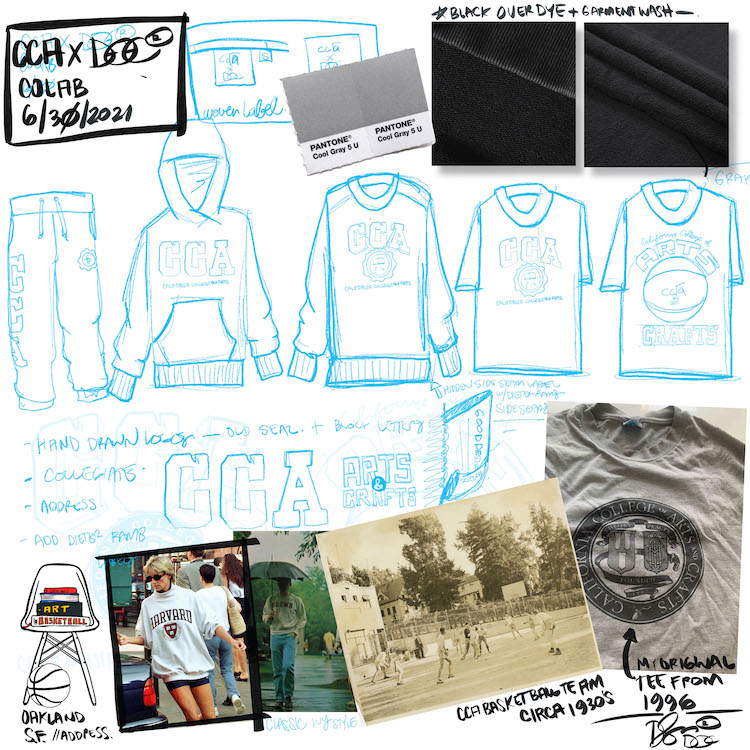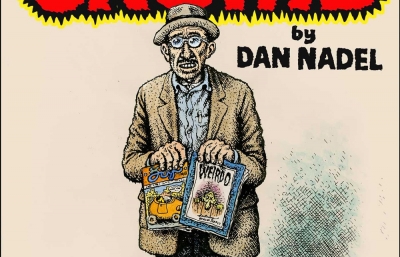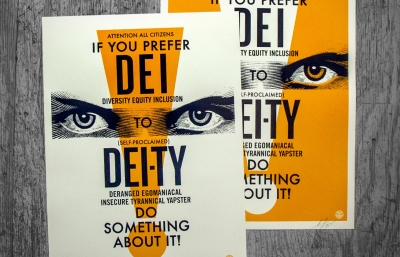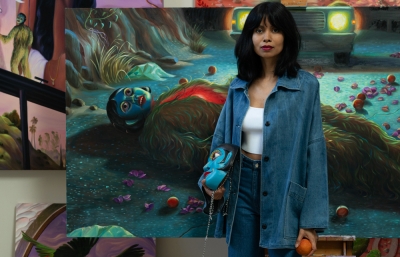“Put me in Coach, I’m ready to play!” Listen to John Fogarty’s song, and you know the feeling. If you can’t be on centerfield, you at least want to hear, see—feel it. Dustin Canalin has been in the field and on the court, and through his brand, Trophy Hunting, he’s achieved his lifelong dream to design clothing and create art that welcomes all of us to join the team.
Gwynned Vitello: It looks like your roots growing up next to a park and playing baseball planted some of the seeds for your career.
Dustin Canalin: I played baseball pretty competitively, so that was my first sport. I was pretty good and made the all-star teams, so that really was my first love. I did excel in it and got a lot of gratification from being able to move ahead and get better. I actually played with a couple guys who went to the majors, like Jimmy Rollins, who’s going to the Hall of Fame, and Dontrelle Willis, who grew up with my brothers. I thought I’d be a professional baseball player growing up.
And then basketball came into the picture.
I always loved basketball, especially the shoes and the culture, which is how I learned about design, through Nike ads, seeing products as a consumer and thinking,this is so cool. With baseball, it’s the same uniform and not as much style. I used to stylize my shoes in baseball, but our high school coach wanted everything exact; there’s no source of expression. With basketball, you could wear different sneakers or a wristband.
So, even just playing basketball is intrinsically more freeform. The opposite is not as appealing to kids who want to see celebration and expression.
Yeah, so many rules. Certain items are allowed, but then and now, they wanted everyone to be the same: one look, vision and goal. There’s a militaristic approach, but I was there to play the sport and that was my first passion. On the extracurricular side, ha, I was looking at the shoes. I liked them and I wanted to figure out more about the whole look.
So you liked playing basketball too, but became enthralled with the entire spirit of the sport. Was it the freedom that was so appealing?
I think it was the culture that was exploding then, like Michael Jordan getting his own commercials. So much contributed to the feeling, just being able to see all the players, because there’s not a lot of them on the court—and commercials for each one. The Warriors were local and played at Alameda College, so we would sneak in and watch practice.
I’d say that Michael Jordan was the first real commercial superstar I remember.
For me, he was the biggest, and knowing what I know now, I see why. He was just always in your face. Every Saturday the Bulls would play, they were the high attraction. They marketed him a lot and his shoes were everywhere. Everything pointed to that as the pinnacle of new and cool. In high school, I wanted to at least have a feel of that.
So, you’re a kid in the Bay Area thinking how much you liked and wanted somehow to be part of the scene. And in the background is your uncle.
My uncle is an exceptional artist, painter, and illustrator, so super talented. Both my parents are good at art too. When I was a kid, I’d win, say, the kite-making or poster contests. It was fun, but I never thought that it could be a career path because I was so focused on being a professional baseball player, though I was always drawing baseball and basketball players or their uniforms, and cartoons and stuff that kids draw. It’s when I took a year off from playing baseball in junior year that I thought, okay, I want to try art. It was just for fun, but the camaraderie between basketball and art blended, and it gave me a reason to focus on something. This was the first summer I had off because baseball is played every day. I always had art classes in school, but now I took it seriously and was trying to learn and practice. That set my eye on the prize and I decided to step up to art school after graduation.
It seems natural that you really loved the whole experience of sports, and, in the beginning, drawing was like a pastime, as well as something your family enjoyed.
My dad was an electronic engineer and mom was a preschool teacher, so she did arts and crafts all day. My uncle, though, went to CCA and became a professional graphic designer. Also, my aunt was a fine artist who traveled and lived in New York and Paris—everywhere it seemed—and that opened my eyes and made me want to follow that path. I mean, I was dead set on my goal to work for Nike.
Did you get encouragement from high school teachers or counselors?
We didn’t have any special programs. My high school experience was me kind of maneuvering as I needed to. If not for my uncle going to CCA, I wouldn’t have known it existed. I applied because everyone was applying somewhere and I ended up getting a scholarship for most of the tuition. That made things a lot easier!
For sure, it was the biggest culture shock I’d ever experienced. It was full of real artists, fine artists—and I’m this guy who just wants to work at Nike. Most were at least 25 and had come, disenchanted, looking for a second career. It was great because it challenged me to hone my skills with live drawing classes, color theory and art history. I just got a whole different perspective on art and really started putting the pieces together. I thought of my aunt with her cool furniture, and I didn’t know what a Wassily or Barcelona chair was, much less historical artifacts. I learned that all this was art and how it was used in movies and commercials. The program is really intense, so it was information overload for me. I was thinking that I needed to draw beautifully in whatever was considered beautiful. I would try to mimic the rendering skills, say, in industrial design, but the real point is to find your own voice, your own hand and your own way of creating what you want to communicate. It’s really about what you’re trying to say that is meaningful.
It seems that you really appreciate what you learned, but that you felt compelled to get out of academia and get going. But despite feeling a little out of your league, you must have had a lot of confidence.
I don’t know, the times were so different. Being at the heart of the beginning of the Silicon Valley boom, you could pick a job and go to work. Everyone was looking for graphic designers. I was able to build a network and ended up getting a decent internship for a promotional marketing company where the creative director was a CCA alum. He showed me the ropes: how to send artwork to a factory, how to communicate with another business, how to put a fax together. We didn't really know what the web could do at the time, but started to make a site of our portfolio because, basically, I had all this stuff. Someone in Philadelphia saw it, and I ended up getting an email that they were looking for designers. I interviewed, they flew me to the east coast, and after six months, it died—no internship, but I’d left school. There was a quick job at Fox Racing, then a call from And1. They’d seen a deck of playing cards I made inspired by basketball, which were based on storytelling. One side was concrete, the other, hardwood floor, and Dennis Rodman was the Joker.
You had the opportunity to combine artistic skills with your knowledge of sports to personalize the fan experience. Following up, how did you feel about making pitches to executives?
I guess it was “ignorance is bliss,” where I felt like I knew everything about my subject or theme. They may have known more about design at the times, but I had confidence from knowing the subject matter. I don’t generally like speaking in public, so I measure out why I’m there; it’s all about the strategy and how you explain and put it together in a way that shoots every single hole through before they have a chance to. This comes through my Dad, who never wanted us to do things twice, who always advised thinking hard about something before doing it. I like to have a collection of people to brainstorm with who will ask questions so I can be bulletproof.
You experienced something like this when you designed the tree logo for the Warriors shirts, right?
Yes, I had built a deck basically saying why it was relevant. It’s on every single garbage can! It’s the symbol for the people, the people who represent this team. But you can’t expect folks to know everything you know, so I make sure that I explain the context of what we’re talking about. That’s why I like doing art for myself now because I don’t have to prove everything to anyone before I start working. After I left Nike, because of the non-compete agreement, I couldn’t do any work related to the athletic industry, but I felt bored, like, what the hell am I gonna do? I’d always done illustrations, so I just bought an iPad and started sketching, thinking of doing an art show. I was able to work on stuff that wasn’t tied to a client’s interest, and, as my non-compete ended, I started a clothing company and opened a studio to do consulting. I can work on my art when my clients are being tough or work on projects for big brands, so I stay in the mix. With my clothing line, I can create what I want and work with my team, so it’s more freeing creatively. It’s a good way to make a living and just have fun.
Maybe you felt constrained in having a voice, but I think it was always there.
I’m a Gemini, so it’s like my mind is never securely fixed on one thing. I really liked this one art show that was mixed media and had everything from sculptures, to manufacturing tables, to print work on posters. What I like about building brands is that you can do that over a long period of time, and with art, you can build this room and make it look how you want and give people particular feelings to talk about and feel in one space.
And it comes around to where you’re still working with sports and athletes.
I just started working on a project called Athlete’s Voices, which sets up sessions for high school and college athletes to have some control in monetizing their likenesses. The program also educates professional athletes on how to manage their own brands and do effective charity work.
And with so much so-called athleisure wear, what makes your clothing stand out?
For instance, we make the best basketball leisure-short, ever. We put zippers on our pockets and a key ring, so you don’t lose anything kicking back on the couch. They’re not too long, not too short and our factories are green compliant. People might say, “It’s a rectangle you put around your waist.” But it’s really about building what we believe in so that people want to participate and come along. We inspire them and they inspire us.
dustinocanalin.com

